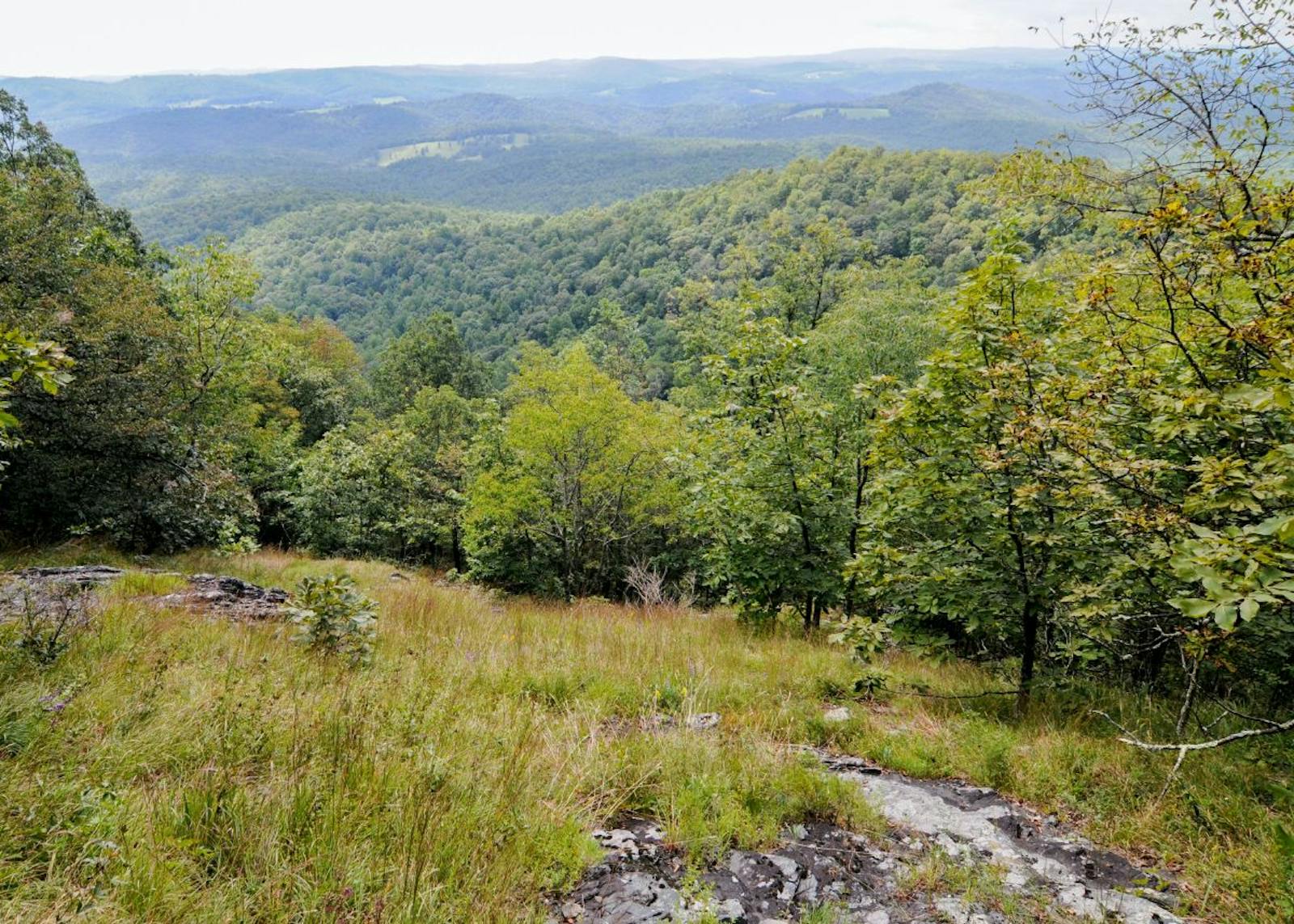Appalachian Piedmont Forests
The ecoregion’s land area is provided in units of 1,000 hectares. The conservation target is the Global Safety Net (GSN1) area for the given ecoregion. The protection level indicates the percentage of the GSN goal that is currently protected on a scale of 0-10. N/A means data is not available at this time.
Bioregion: Appalachia & Allegheny Interior Forests (NA24)
Realm: Northern America
Ecoregion Size (1000 ha):
16,650
Ecoregion ID:
330
Conservation Target:
41%
Protection Level:
0
States: United States: AL, GA, SC, NC, VA
The Appalachian Piedmont Forests ecoregion lies between the Coastal Plain (Southeast US Conifer Savannas and Mid-Atlantic Coastal Savannas ecoregions) and the Appalachian Mountains (Appalachian-Blue Ridge Forests ecoregion). The term “piedmont” means foothills. The natural vegetation of this region is poorly understood because the Piedmont has been so heavily modified for a long time by agriculture and other human activity.
The remaining natural areas of this ecoregion are threatened, especially since only 0.8% of the ecoregion is formally protected. Still, this ecoregion contains some fascinating natural communities, in large part related to its highly variable geology and topography.
The Appalachian Piedmont Forests ecoregion is entirely warm temperate in climate. The natural vegetation is largely forest and woodland, particularly of oaks, pines, and hickories, but also includes moister beech forests on deep fertile soils. Extensive prairies and savannas also occurred, often associated with soils high in calcium, magnesium, and iron. From 1540 to 1750, European settlers and traders reported prairies up to 40 km across, with relatively large herds of bison.
%20AdobeStock_294011719.jpeg)
The flagship species of the Appalachian Piedmont forests ecoregion is the blackjack oak (Quercus marilandica).
Although the presence of endemic plants in these grasslands suggests considerable age, Native Americans played a greater role in maintaining these grasslands with fire than in the adjacent, less dissected, and more lightning-prone Coastal Plain, with its generally more flammable vegetation. Nevertheless, fire and fire-dependent communities were once much more common on the Piedmont than they are today, for example as determined from historical records.
Longleaf pine woodlands occur in scattered areas of the Piedmont, such as the Uwharrie Mountains and on the unusual Burks Mountain, a serpentine (rare and extreme soil type) hill northwest of Augusta, Georgia, which contains shortleaf and loblolly pine as well as longleaf pine and various scrub oaks, hickories, and rare plants and insects. The rarest plant here is the Dixie Mountain breadroot, known only from Burks Mountain and two counties in South Carolina.
Scattered monadnocks, isolated rock hills or grassy knobs that rise abruptly from the surrounding plain, are distinctive in the Piedmont. Granite flatrock communities occupy some of these knobs from Virginia south to Alabama. These are most common in the upper Piedmont of Georgia, for example Stone Mountain, Arabia Mountain, and Heggie’s rock.
The flatrocks flood in the spring and contain rock gardens with vernal pools and many rare plant and invertebrate species. Plants are arranged in roughly concentric circles from species requiring deeper soils in the centers of patches to species more tolerant of shallow soils and seasonally drier conditions on the margins. Endemic species of the flatrocks include plants such as black-spored quillwort, mat-forming quillwort, and pool sprite, and invertebrates such as midges. Wetlands in the Piedmont include shallow depressional communities often called flatwoods.
The soils are described as “shrink-swell” because they swell under wet conditions in the winter and shrink during dry conditions in summer. Seepage wetlands are also common, as are floodplain and bottomland forests, though not nearly as extensive as in the Coastal Plain. Most plant communities in the Piedmont contain species from the adjacent Coastal Plain as well as the adjacent Appalachian Mountains.
The Piedmont has not only been altered in the past. Rapidly growing metropolitan areas of Raleigh-Durham, Greensboro, Winston-Salem, Charlotte, Greenville, and Atlanta, among others, also occur in this ecoregion. Urban sprawl is prevalent. An urban growth model for the southeastern U.S. shows particularly intensive urbanization in the Piedmont by the year 2060, with a highly connected urban landscape across the region.
Priority conservation actions for the next decade are: 1) address expanding human footprint in the ecoregion by improving land use planning and regulations; 2) greatly increase federal, state, and local acquisition of conservation lands, and improve management of existing conservation lands, especially with respect to management of fire and water; and 3) reintroduce populations of extirpated species.
Citations
1. Noss, R.F. 2013. Forgotten Grasslands of the South: Natural History and Conservation. Island Press, Washington, DC.
2. Edwards, L., J. Ambrose, and L.K. Kirkman. 2013. The Natural Communities of Georgia. University of Georgia Press, Athens.
3. Ricketts, T.H. et al. 1999. Terrestrial Ecoregions of North America: A Conservation Assessment. Island Press, Washington, D.C.



